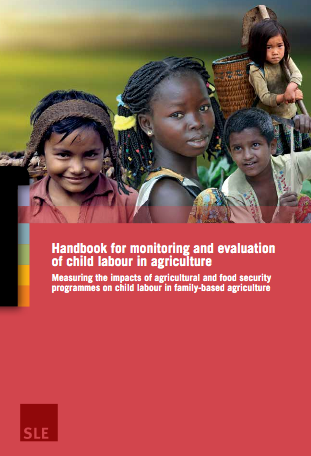Agriculture is the single sector that uses the most child labor, according to the 'Handbook for Monitoring and Evaluation of Child Labour in Agriculture,' released by the Food and Agriculture Organization of the UN (FAO).
The publication addresses child labor in the crop production, livestock, fisheries and aquaculture and forestry sectors, and recommends the inclusion of anti-child labour measures in agricultural and rural development programmes.
 15 June 2015: Agriculture is the single sector that uses the most child labor, according to the ‘Handbook for Monitoring and Evaluation of Child Labour in Agriculture,’ released by the Food and Agriculture Organization of the UN (FAO). The publication addresses child labor in the crop production, livestock, fisheries and aquaculture and forestry sectors, and recommends the inclusion of anti-child labour measures in agricultural and rural development programmes.
15 June 2015: Agriculture is the single sector that uses the most child labor, according to the ‘Handbook for Monitoring and Evaluation of Child Labour in Agriculture,’ released by the Food and Agriculture Organization of the UN (FAO). The publication addresses child labor in the crop production, livestock, fisheries and aquaculture and forestry sectors, and recommends the inclusion of anti-child labour measures in agricultural and rural development programmes.
“In recent years, we have seen an increase in awareness of child labour and its role in producing export crops such as cocoa, coffee and cotton,” said the Director of FAO’s Social Protection Division Rob Vos. He explained that this awareness has contributed to action to prevent child labor in these value chains, but that “child labour on family farms not connected to international commodity markets has remained largely untouched.”
The Handbook aims to fill this gap by addressing child labour in family farming in a way that respects family circumstances and local values. The guide provides a toolkit and data collection methods for assessing child labour in agriculture and promoting good practices to prevent it. It also provides advice on how to track the impact of child labour on school performance and health.
The report emphasizes that specific programmes targeted at children are not sufficient to prevent all forms of child labour, explaining that child labor must also be addressed through broader agricultural and rural development and food security programmes that aim to lift people out of poverty. The Handbook provides guidance and tools for such programmes to incorporate child labor prevention and mitigation at the design stage, and to monitor and evaluate impacts.
FAO developed the guide in partnership with Humboldt University of Berlin, Germany. [FAO Press Release] [Publication: The Handbook for Monitoring and Evaluation of Child Labour in Agriculture]